Last updated on May 10th, 2024 at 12:59 pm
Transitional Kitchen Design Guide
This extensive and complete guide will give you excellent pointers to how transitional kitchens work. You’ll learn why they embrace two kitchen styles that give birth to a totally new theme. If you’ve been looking for something different, this guide tells you everything you’ll ever want to know about transitional kitchens.
Just like two great tastes that go together, chocolate and peanut butter simply go hand-in-hand. When it comes to kitchen designs, there is another delicious combo that mixes two totally different styles to create a transitional design flavor that you’ll fall in love with!
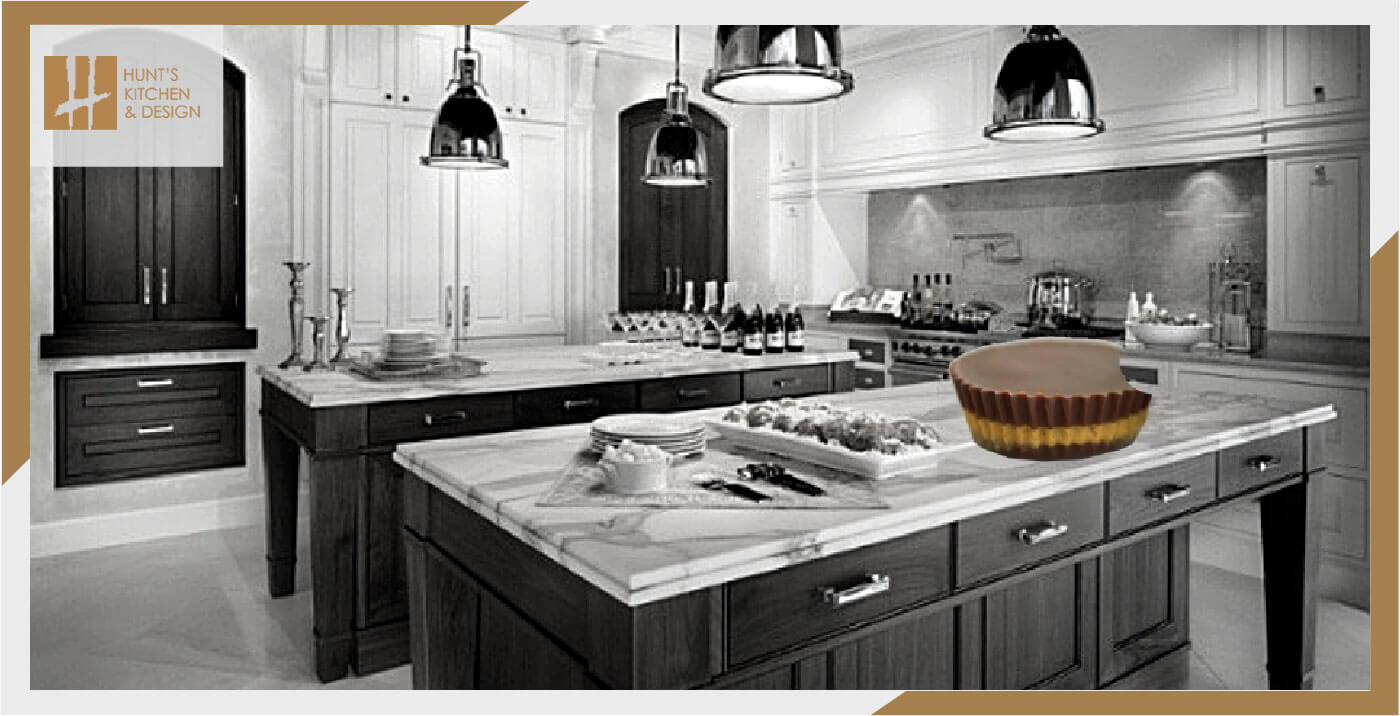
What is a transitional décor?
Maybe you’re a little too young to know the “Who’s on First” comedy routine, but the whole sentence is simply a play on words that tell you the answer right away. When it comes to transitional kitchen design, the answer is easily decoded to tell you what you can expect. All transitional kitchens include traditional and contemporary designs. Both of these are morphed together to create a completely new style.
Now before you start scratching your head, the transition itself starts when one phase starts to blend or combine with the other. But before you jump to conclusions, there are ground rules that help these two designs blend smoothly. With careful planning and a generous amount of mixing and matching techniques, you’ll have the perfect balance of design style.
Contemporary + Traditional = Transitional
The first item that you’ll notice about contemporary kitchens is the sleek and smooth cabinet doors. Everything is meant to look highly stylized and modern. There are no raised cabinet details other than handles and knobs that adorn each panel. Don’t expect to see any visible hinges, since many cabinets are meant to slide out or are hinged from the inside. Decorative appliances are built into the walls so they don’t ruin a flush and smooth design.
Traditional kitchens are totally opposite and feature ornate and decorative accents on cabinet doors. There is a home-like harmony of colors and wooden surfaces with no shortage of added decorations and appliances that adorn countertops and permeate the entire kitchen. Stepping into a traditional kitchen, you instantly feel there is an old-world charm with wooden cabinetry and marble-faced countertops.
Contemporary rules
- Lighting is often recessed but not limited to highly stylized hanging modern lamps
- Cabinets are largely smooth including solid stark colors including white, black, and earth-tone or neutral colors.
- Everything within contemporary kitchens is meant to not stand out looking detached
Traditional rules
- Hanging lamps that appear aged or antique
- Inset wooden cabinet doors provide plenty of visual appeal with rich wood grain or stains.
- Open shelving show off appliances and decorations that fill the entire kitchen
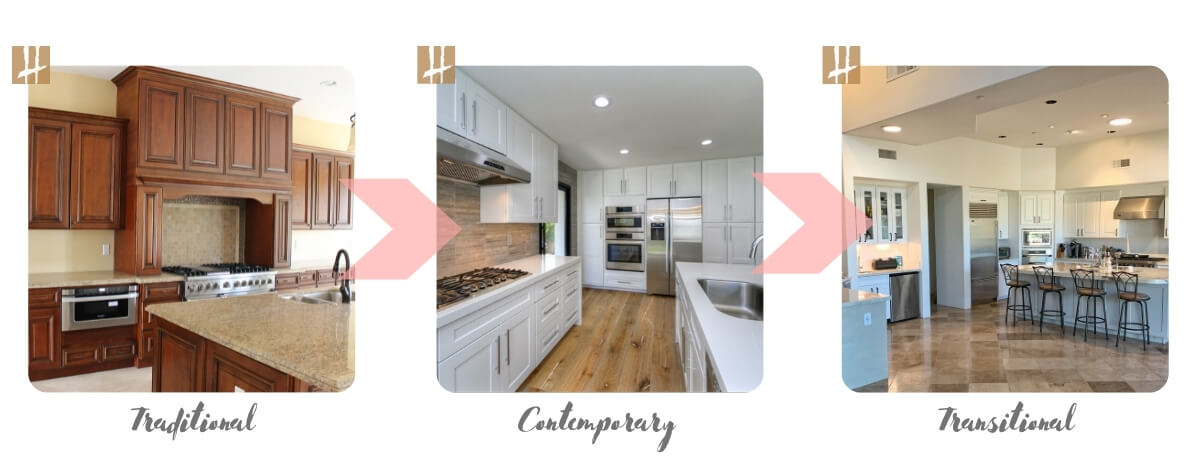
Makings of a Transitional Kitchen
So now that you’ve got a good idea of what’s going on here, you can imagine where the fun starts with blending these two together.
You might not think that there is room for mixing, yet that’s where the real magic begins. Here are some of the best tips we can offer you.
Basic layout
Not much is really changing in terms of the essential layout. What does need to be addressed is the mixture of traditional and contemporary. The most important point is to blend that simple and sleek look with decorative elements. This is not always an easy task, so the lines need to become a happy medium. This means there will need to be a subtle mix of wainscoting, corbels, and molding.
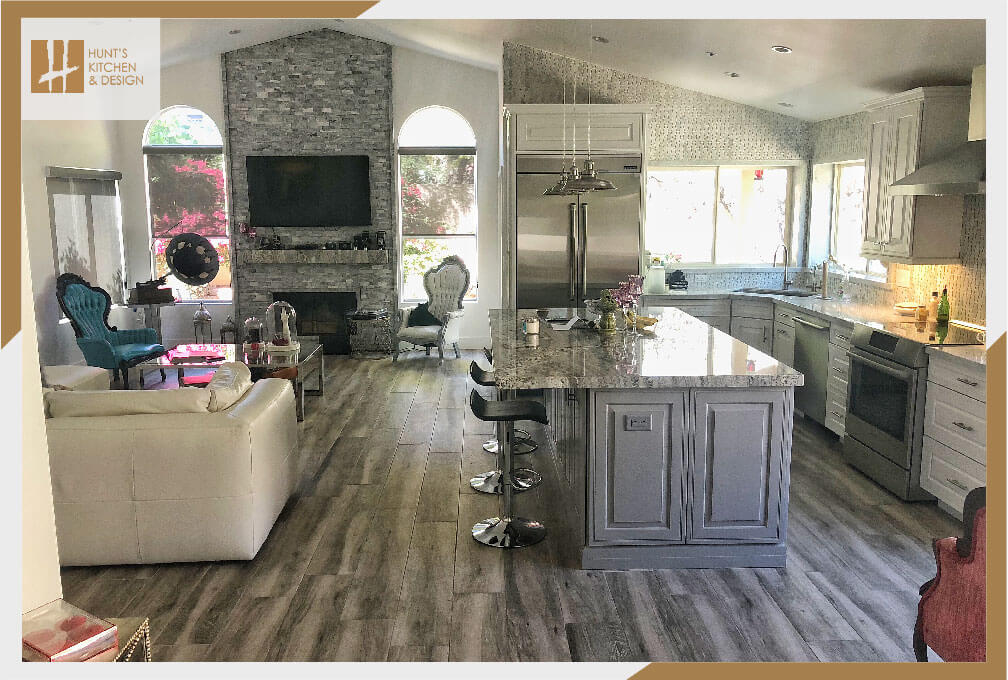
Angles and shapes
While any contemporary kitchen creates the sleek lines that continue wall to wall, this must appear to blend with a traditional kitchen layout. It will also need to be dialed back halfway so that it looks reminiscent of a contemporary look. The big difference is that cabinets retain as much traditional appearance likewise. It’s the difference between overwhelming and gaining equal attention.
“It combines curves with straight lines, it’s airy and polished , and it’s textured but not cluttered.” – Renee DiSanto | Park & Oak Interior Design
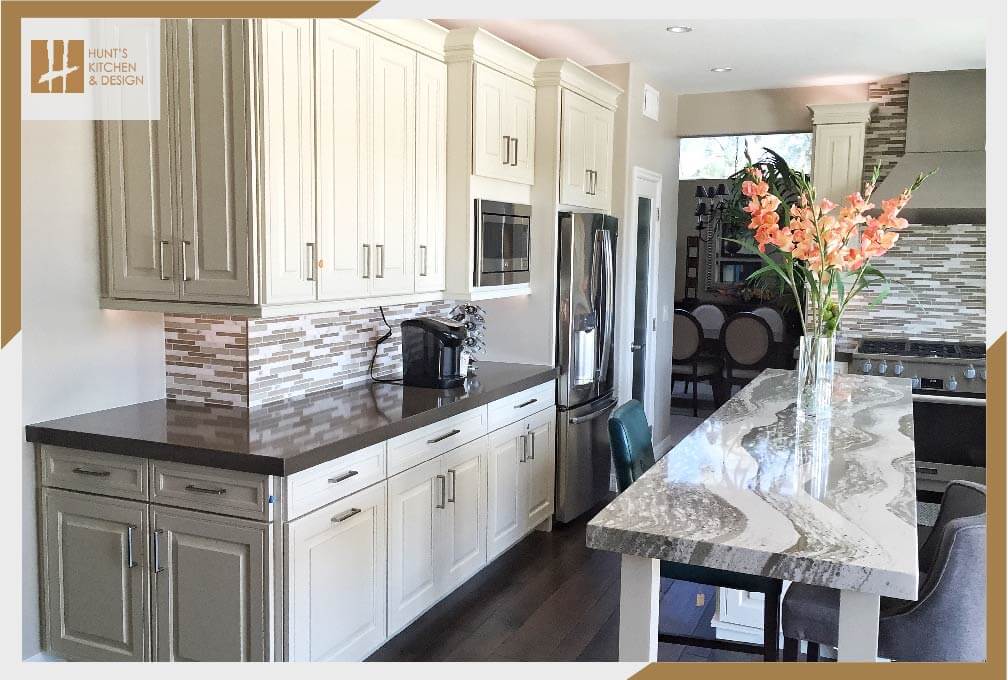
What colors work best?
One point to follow is to include a fine line between neutral and pastel colors. As opposed to the rich wooden cabinets colors you see in a traditional kitchen. These are compromised to allow much more natural unfinished wood colors full of tan, and warm whites. You can still use distressed colors on cabinets, but these need to be relaxed enough to match the surrounding tones throughout the kitchen.
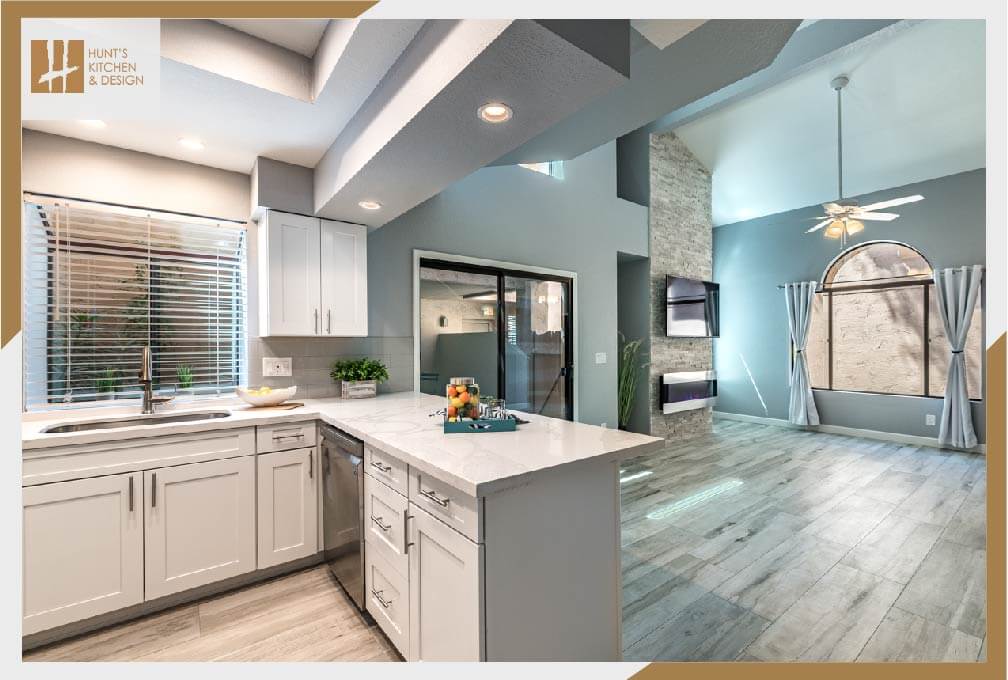

Countertops
The good thing about these two styles is that marble and granite never fail to impress. There is always room to add Quartz-like sparkle and highly polished countertops. These can still allow angled and rounded edges and decorative beveled patterns. As long as you continue these countertops as a constant line it helps complete the contemporary sleekness without losing the traditional classiness and old-world charm.
Appliances
Items such as ovens, stovetops, and kitchen appliances often look invisible inside a contemporary kitchen. A transitional kitchen is exceptional since these can stick out slightly so there is a hint of traditional design happing here. The main difference is that these appliances look better when chrome and polished metal help give a blending effect so it doesn’t stick out visually and appears more chameleon-like instead.
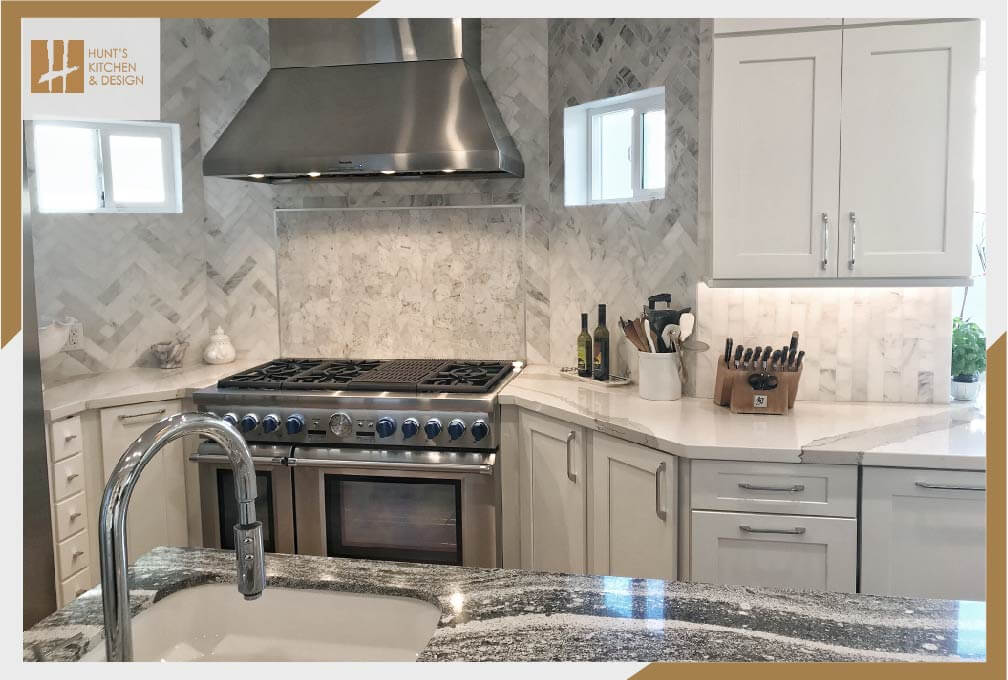
Types of cabinets
Luckily you can still have a 5-piece cabinet door with a center that allows for a framed edge. Cabinets should follow one rule that allows for the cabinets to touch the ceiling and includes decorative molding. While corbels are nowhere to be seen, decorative molded arches are allowed over window cabinet gaps. Cabinet doors should appear as flush as possible but do still have that inset edge that does give a hint of decorative framing. For more on designing custom cabinets see our page here.
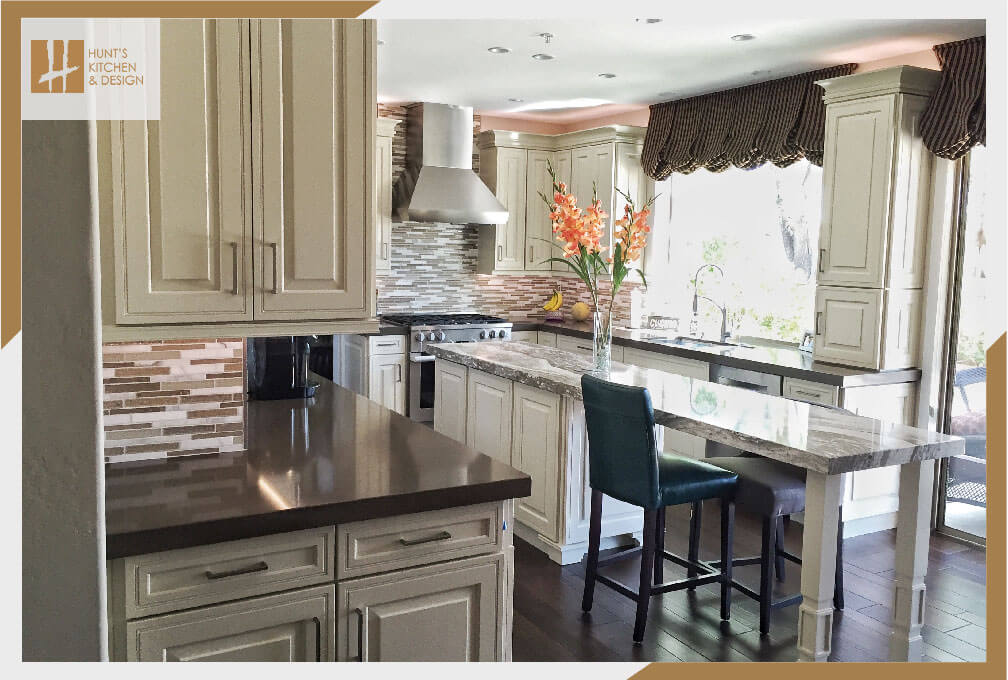
The hardware and fine detail
The transitional kitchen is still strict enough for not including exterior hinges, but handles and knobs are an exception. Chrome and polished brass are excellent choices since they also mimic the surface colors around them. This helps them to blend in and become somewhat invisible. Yet there are some exceptions if they don’t stand out with an overt design. This means it needs to follow your overall kitchen color design.
Flooring
Your flooring needs to follow an opposite shade to the color of your cabinets. Light and natural cabinets will look better with a darker floor, whereas darker cabinets need a light-colored floor. It’s a matter of contract that helps frame your cabinets and help spread natural light accordingly. Natural wood floors and tiles that are highly polished look great in addition to neutral semi-gloss flooring material.
Best Practices
Combining two totally different styles is not always a matter of what an interior decorator has to advise. It’s completely up to your personal tastes within reason of style and consideration. You might like a specific wooden cabinet frame, but you’ll also need to yield in some cases. Here are extra tips that help blend these together seamlessly.
Handcrafted wooden cabinets
Who doesn’t like looking at shaker cabinets that are elegant even if they don’t have intricate inset lines? As long as they retain a handcrafted look, you get a timeless addition that still appears to be in line with contemporary smoothness. Once you break that rule, the transitional look starts to fall apart. And even though distressed and aged accents aren’t off-limits, it needs to be very subtle so it doesn’t distract from the rest of your kitchen colors.
Semi-detailed wooden moldings
The very top of any cabinet can have decorative trim which creates the continual line concept of contemporary kitchen design. This may include a gap where the top of your cabinet reaches a ceiling. This is further a bonus since these are one of the few areas where decorative items can be stored. This adds a bit of traditional flavor without them getting in the way of countertop space.
Find a compromise with the lighting
Lighting for a transitional kitchen is a generous combination of modern and old-fashioned. It’s perfectly fine to mix these two with recessed lighting and hanging lamps. As long as you stick to a newer and well-kept design, hanging lamps should follow a matching color to your cabinets. Reflective and polished metal lamps are always a welcome addition to this mixed concept. Also, make good use of lighting underneath cabinets or shelving spaces right above.
Make use of decorative kitchen windows and shelves
While you can use exaggerated cabinet details, windows can retain that traditional look by using separate glass framed glass panes. If you decide to use glass on select cabinet doors, stick with a single glass panel, preferably a frosted glass. Wherever it’s appropriate, you can add individual open shelves to place kitchen appliances or decorations. You want to keep your countertops as open as possible.
Customizing a Transitional Kitchen
Some of the best tips for creating a transitional design kitchen are going to start with your immediate needs. We’re often confronted with a love for the past, but trying to embrace new and emerging design trends. Transitional kitchens are harmonious since they give just the right amount of two very different worlds.
Mixing the old with the new
Immediate signs that you can mix both worlds are obvious with the addition of a kitchen island. Turned wooden pillars adorning the edges can be followed up with simple corbels to support a countertop. This is the only exception when it comes to island design. Select vintage decorations are fine, but your appliances must be high-polished chrome and metal. Backsplashes and walls will still allow brick and textured surfaces.
Get creative with subtle accents
Since contemporary design follows such a strict order when it comes to overly clean and organized kitchens, a transitional kitchen gives you room for accent space. Areas, where cabinets intersect or have gaps, are great nooks for open shelf space. The tops of shelves are also hotspots for extra display space. Countertops are still somewhat touchy and should always have fewer decorations and are mostly reserved for flowers and fresh growing herbs.
Perhaps you have something stored away in the garage or storage that could add a great personal touch.
A family heirloom, art, or piece of furniture that has been passed down to you.” – Vanessa Yufe | VY Designs
The key is to harmonize old and new.
Create contrasting colors
There is always going to be a careful balance of light and dark where the floor and cabinets of your kitchen need to oppose each other. The overall color of your kitchen doesn’t need to follow this concept. Ceilings and floors can follow similar color patterns. Yet, the addition of textured walls or painted brick should follow a similar color palate pattern. The key to this is sticking to a color wheel translation of contrasting opposite colors.
Take advantage of the space you have
Do you have enough kitchen space to give your kitchen a decent transitional makeover? This is especially important if you want to add a kitchen island. Most kitchens in family homes will have more than enough room for adding an island if they aren’t designed with one already. Then this is just a matter of a makeover. Thankfully, the kitchen space you already have will be more than enough room to make it transitional.
Islands make a difference
The beauty of this design shift is that- kitchen islands are hot for contemporary and traditional kitchens. If you have the space to add an island, this is a great update for any kitchen that could use some preparation counter space and built-in eating areas. As long as they follow the same cabinet requirements, a nice large glossy slab helps create a slick appearance with country charm.
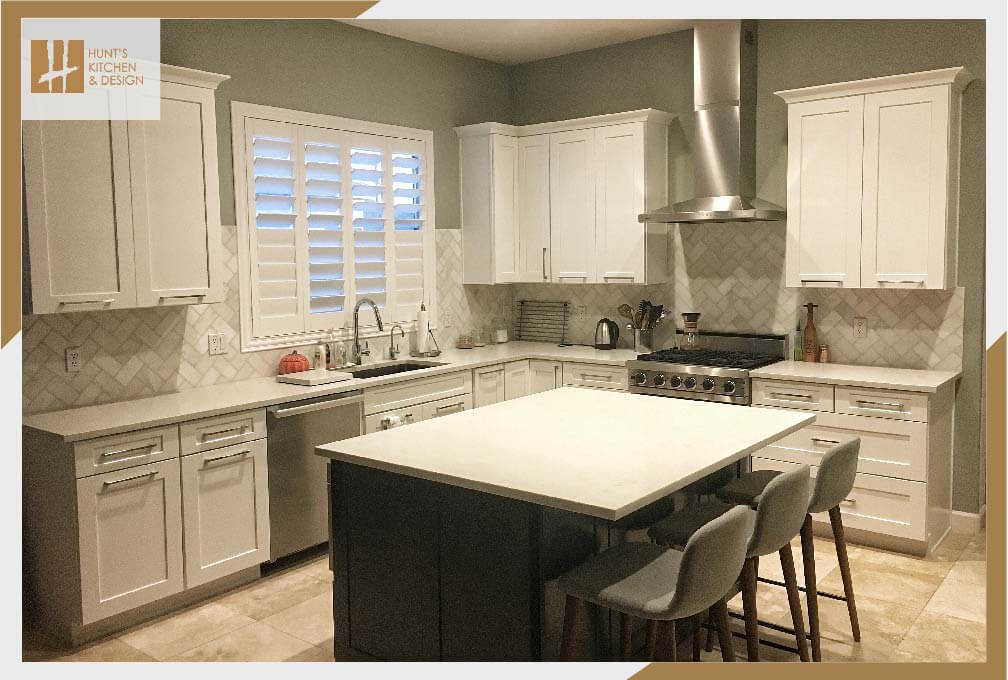
Is a transitional kitchen makeover right for me?
You can always find plenty of charm that brings a good balance of traditional design mixed with contemporary features. Some elements can be observed in both styles that don’t overstep their boundaries. But if this style isn’t appealing to you, perhaps there is no way to make a good compromise. This style isn’t for everyone but does contain elements that everyone can decide where to make a design compromise. For more on various types of kitchen design styles, visit our page on kitchen design ideas and cabinetry decor ideas here.
If you’re interested in finding out more information to give your kitchen a transitional design change, we have designed produced many of these styles of kitchens in the last few years; see a few of them here. Feel free to visit our Scottsdale showroom or call to schedule a one-on-one consultation to discuss your upcoming remodel. We are dedicated to creating the prefect design for your new kitchen.
FAQs
What is transitional kitchen decor style?
Last updated on May 10th, 2024 at 12:59 pm
Transitional kitchen decor is a blend of traditional and contemporary design elements, creating a timeless and sophisticated look. It combines classic details with modern functionality, resulting in a versatile and comfortable kitchen space. Think a country porcelain sink with updated nickle faucets or cabinets and drawers with updated hardware.
What colors are common in transitional kitchen decor style?
Last updated on May 10th, 2024 at 12:59 pm
Light and airy colors are the trademark of any kitchen design. This light color palette helps make the space feel larger than it really is, and give your space an overall airier feeling. Other colors that work can include neutral shades such as white, gray, and beige, as well as soft, muted colors such as light blue, green, and yellow.
What materials are commonly used in transitional kitchen decor style?
Last updated on May 10th, 2024 at 12:59 pm
When you think of a transitional kitchen, materials like wood, porcelain and steel come to mind most often. Wood has always had its place as cabinets, drawers and flooring. The same as porcelain, both as a sink or tiles for back-splashes and flooring. And steel hardware and accents make the entire décor pop adding details to otherwise more boring objects.
How can I add transitional elements to my kitchen?
Last updated on May 10th, 2024 at 12:59 pm
Some of the easiest ways is to add new cabinetry where you can as this décor focuses on having acquit storage space for an airy and casual elegance. Or consider new lighting fixtures made of steel or even Iron with milk glass shades or clear glass. Then there is the back splash area that can be done in the traditional white subway tile design that is as timeless today as it has ever been. And if you have a linoleum floor or something less traditional, consider replacing with natural or faux wood tiles to tie all of the elements together.
What type of lighting is suitable for a transitional kitchen decor style?
Last updated on May 10th, 2024 at 12:59 pm
When thinking about suitable lighting for a transitional kitchen decor think glass. Almost all transitional kitchens today incorporate some sort of lighting with either clear or milk glass shapes. The fixtures themselves are often simple in design and are made of metal. Stick to black or matte black colors for the fixtures. Also include a pendent light or two as they are often associated with a transitional styled kitchen.
What type of flooring works well in a transitional kitchen decor style?
Last updated on May 10th, 2024 at 12:59 pm
The best flooring options that work well in a transitional kitchen style include plank-style flooring that uses either light or dark colored wood grained flooring options. Large over-sized titles of natural colors and textures also work well in these style kitchens. The idea is to be airy and open with a no-clutter feel to the kitchen. You can consider using area rugs for added warmth and texture.

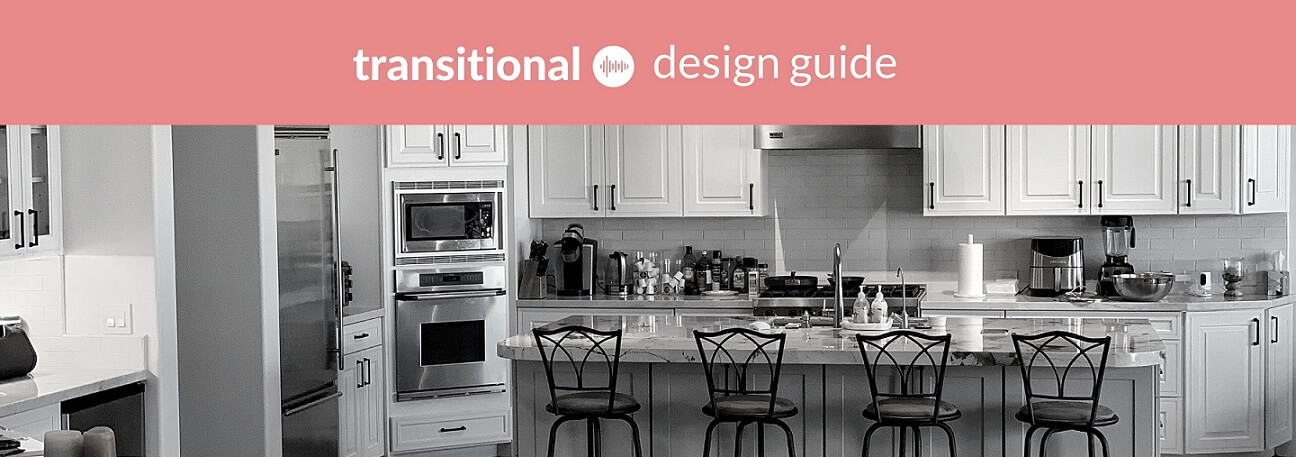
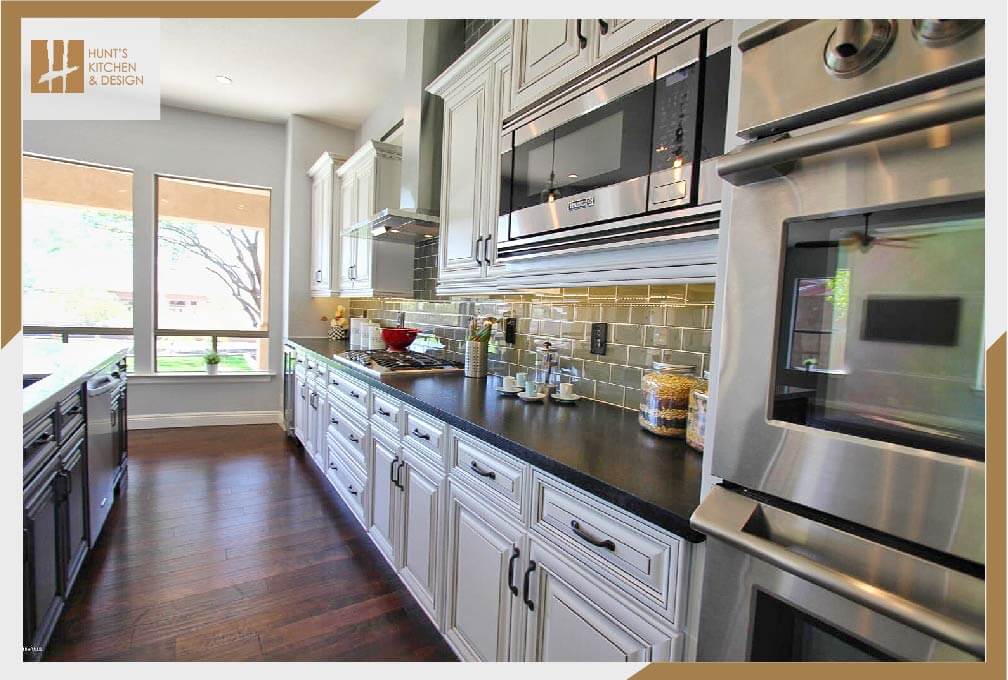
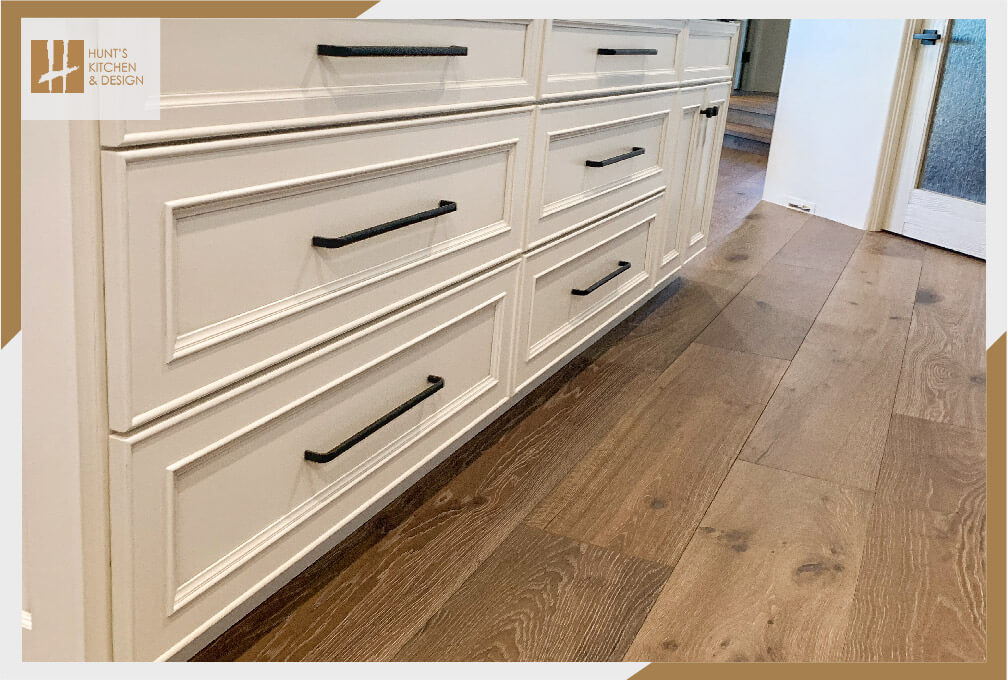

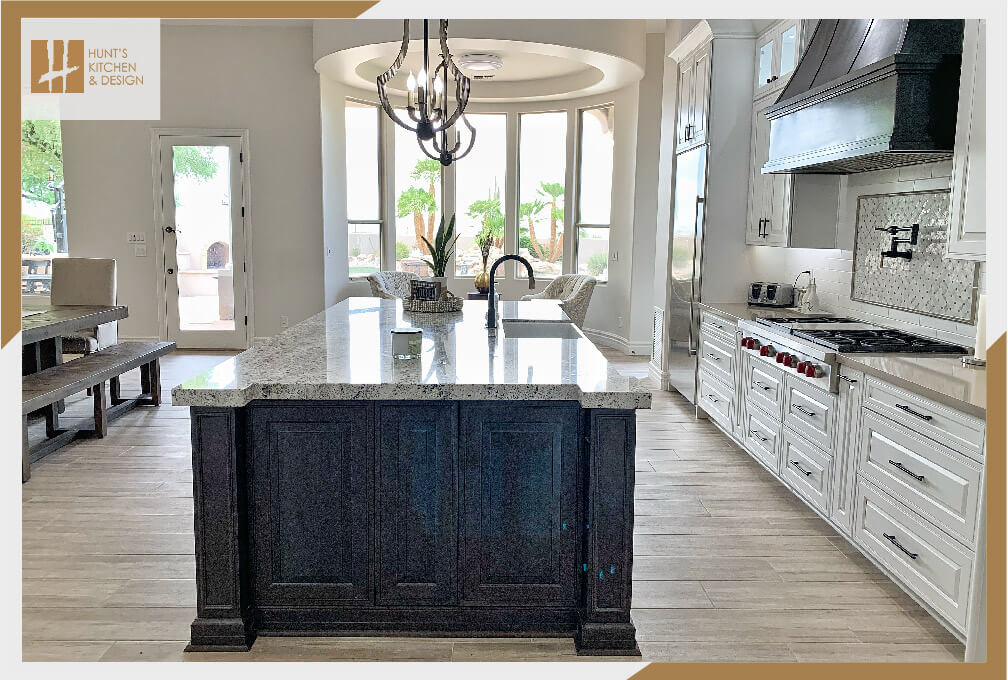
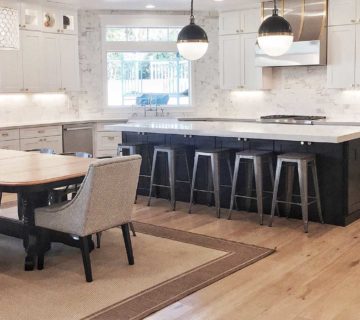
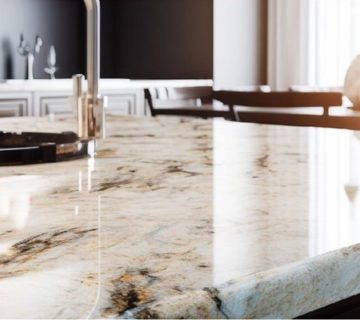

No comment